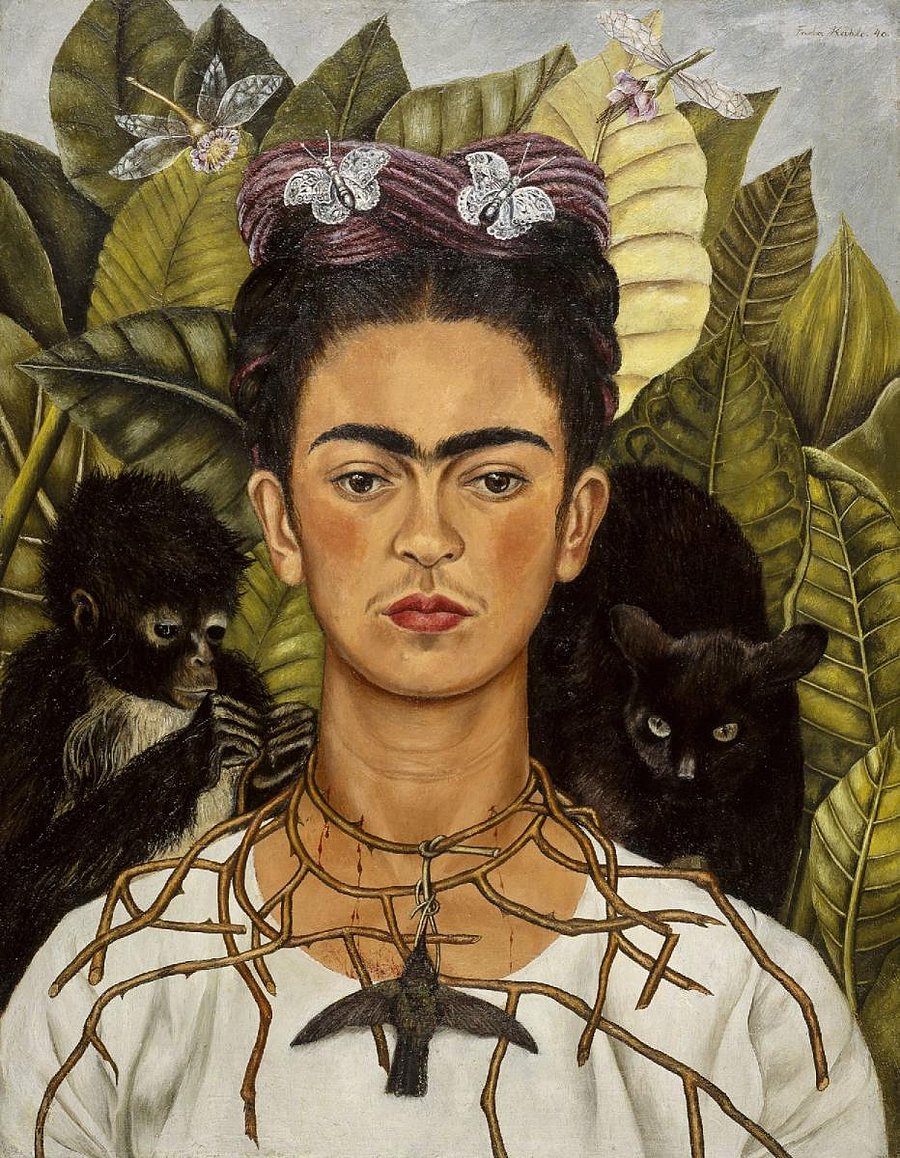
A painting of Vincent Van Gogh with a bandaged ear is probably as well-known and widely recognised as his ‘The Starry Night’. Self-portraits by artists often evoke instant recognition and are as famous as their other paintings. Most self-portraiture is a result of an artist's self-exploration and deeper comprehension about himself.
From Rembrandt, Albrecht Dürer, Andy Warhol to Amrita Sher-Gil, artists’ self portraits have offered insights into how they perceive and choose to portray themselves. Frida Kahlo, who often painted herself, famously said, “I paint myself because I am so often alone and because I am the subject I know best.”
She created 55 self-portraits that have given us a glimpse of her life and the tribulations that she faced. Her representation of herself was also a means to voice and portray the physical and emotional distress and the trauma that she was going through. ‘Self-Portrait with Thorn Necklace and Hummingbird’ and ‘Two Fridas’ are both well-known works by her, which have several motifs that capture her suffering. The latter denotes a spectrum of turbulent emotions that she went through when her husband Diego Rivera asked her for a divorce.
Surly and restless
Vincent Van Gogh was another artist who created several self-portraits, perhaps 30-40 of them. ‘Self-Portrait’, 1889, was the last one painted months before he died. It’s surly, restless and intense with the bluish patterns from ‘The Starry Night’ encasing him and his background in a swirling agitated energy field. Van Gogh is also believed to have painted himself often since he could not afford to hire a sitter.
Most of his portraits offer an insight into his mental state — ranging from intense turmoil to calmer acceptance, for instance, where he paints himself in front of an easel and looks upon himself as an artist — a much more at-peace rendering.
Rembrandt was perhaps the most prolific artist when it came to self-portrayals; close to 100 works have been documented. ‘Self-Portrait’, an oil painting done in 1960, is a work which captures his inimitable style — a solemn demeanour with his characteristic use of light. Salvador Dalí’s portrayal in ‘Soft Self-Portrait With Grilled Bacon’, 1941, is an interesting depiction, and frankly quite ‘Dali-esque’. The piece of bacon, a shapeless mass that has been propped up, adorns the artist’s characteristic upturned moustache.
Closer home, Amrita Sher-Gil painted a series of self-portraits in her short life; one of them, created in 1930, captures her in a vivacious and lively mood, a rare portrayal of her warm and animated self.
Artists’ self-documentation in the form of their portraits provide a lot of information about them, and their detailed reading in terms of style, symbols, motifs, props, colours and background provide valuable clues. These also offer insights into how they perceived themselves; for instance, Durer’s ‘Self-Portrait at the Age of Twenty Eight’ which resembles the figure of Christ — historians believe that he wished to convey that his gifts were God-given.
The author is a Bangalore-based art consultant, curator and writer. She blogs at Art Scene India and can be reached on artsceneinfo@gmail.com
Dab Hand is your fortnightly art world low-down.